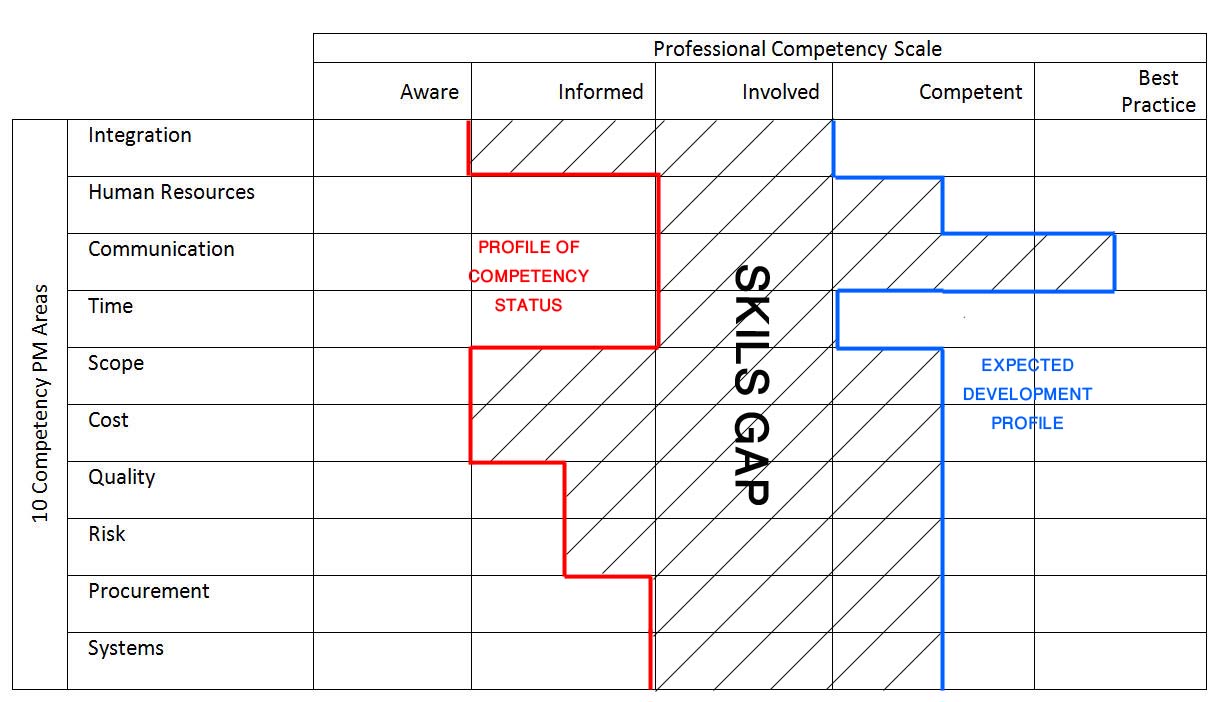A standard can be defined as a requirement or developed norm that guides the undertaking of a given task. Standards exist as a formal document that defines given criteria, processes, methods, or even practices in technology. The various standards that exist in project management can be termed or referred to as performance-based standards of competency. These standards are used by people to guide them in their job expectations. In other words, they help the workers to identify, know and understand the part of their occupation that is needed such that they can be able to strengthen their basic roles in such institutions, companies, or even organizations (CISC, 1997). It is also through these standards that projects are planned, implemented, and even evaluated. They address the various requirements and ensure that tasks are effectively carried out to achieve expected outcomes. Project management involves the management of the scope to be covered, time to be taken in completing the project as well as the total cost of completing the entire project. In this case, project management can be defined as the process through which resources are planned for, organized, and managed to allow for the achievement of set goals and objectives during the undertaking of a project.
The most important thing to consider about the standards of project management based on information technology is the fact that they have been specifically designed for assessment only. In such a case, the issue of assessment has a developing effect because only well-versed and qualified, and registered assessors do the job. The set principles or standards by the Australian Institute of Project Management (AIPM) are based on the Project Management Book of Knowledge (PMBOK) which includes integration management, cost, time, scope, communications, human resource, quality, procurement, and risk management (AIPM, 1996). This paper will keenly look into and compare two such standards which are the Australian standard ANSCPM and the (National Vocational Qualifications).
Competency units
Quality performance standards for the two chosen study areas have been developed according to some units well described as the units of competence. For both of these two standards, Assessment is usually based on proof of evidence of competence in a particular field against the set-out performance criterion at the levels which are usually selected by the assessor involved in carrying out the required duties of assessment. According to the Australian version, there are 8 basic units of competence as compared to the UK which has five units of competence. Of the eight Australian units of competence, Australian National Competency Standards for Project Management are staged in the fourth, fifth, and sixth levels (OSCEng, 1996). The various similarities between the Australian style and the British style are summarized in the paragraphs below.
The competence units are vastly described as the expected outcome of the personnel involved in the realm of project management.
This expectation is dependent on a particular job aspect. In any area of employment, the so said unit can be used as an area of employment that can serve as a complete function (OSCEng, 1999).
Australian standards have been making tremendous contributions to the management of time during project management. They play a great role in the development of effective and feasible project schedules and the application of the necessary skills required to enhance good and result-oriented management of these schedules.
Competency elements
The competence elements are a description of the various elements which can describe how each personnel is competent and what each one of them is expected to showcase during a certain project and at a particular phase in that project. They describe the various tasks to be undertaken by each person as well as the achievements to be made. Generally, they define the specific expectations, roles, and responsibilities of a worker involved in carrying out a given project.
Performance criteria
The performance criterion is descriptive for all the elements involved in a unit. This criterion is used as a measure of the achieved outcome so that the performance of every category is compared against the desired level of competency. This phase is assessment units are usually evidence-based and it is specific to whichever part of the competence was tested (OSCEng, 1997).
Range indicators
Range indicators are the instances and also the specific areas or situations in which all the competence elements are supposed to be placed or applied. They are measures used to assess the progress of project undertakings in terms of whether the expected outcomes, goals, or objectives have been achieved according to the set standards.
Underpinning knowledge and understanding
The various set standards are mostly used to cover the performances and the performance aspects. In addition to this the underpinning or the strengthening knowledge, as well as the required value of understanding, is covered in such a way that the performance turns out to be outstanding (AIPM, 1996).
The performance evidence guides are the guides that indicate the degree and also the type of presented evidence that is acceptable by the particular enterprise or the particular industry to allow for the achievement of guaranteed competence in whichever unit will be assessed. Elements that might be required to give evidence can be a thorough grasp through demonstration of the underpinning knowledge and evidence (MCI, 1997).
(Appendix 3 Self-assessment sheet, ICB – IPMA Competence Baseline Version 3.0).

References
AIPM (Sponsor) (1996) National Competency Standards for Project Management. Australia: Australian Institute of Project Management.
OSCEng (1996) OSCEng Level 4. NVQ/SVQ in Project Controls. London: Occupational Standards Council for Engineering.
OSCEng (1999) OSCEng Level 3. NVQ/SVQ in Project Controls. London: Occupational Standards Council for Engineering.
OSCEng (1997) OSCEng Levels 4 and 5: NVQ/SVQ in (generic) Project Management. London: Occupational Standards Council for Engineering.
CISC (1997) Raising standards: Construction Project Management: NVQ/SVQ Level 5. London: CISC (The Construction Industry Standing Conference).
MCI (1997) Manage Projects: Management Standards – Key Role.London: Management Charter Initiative.
.